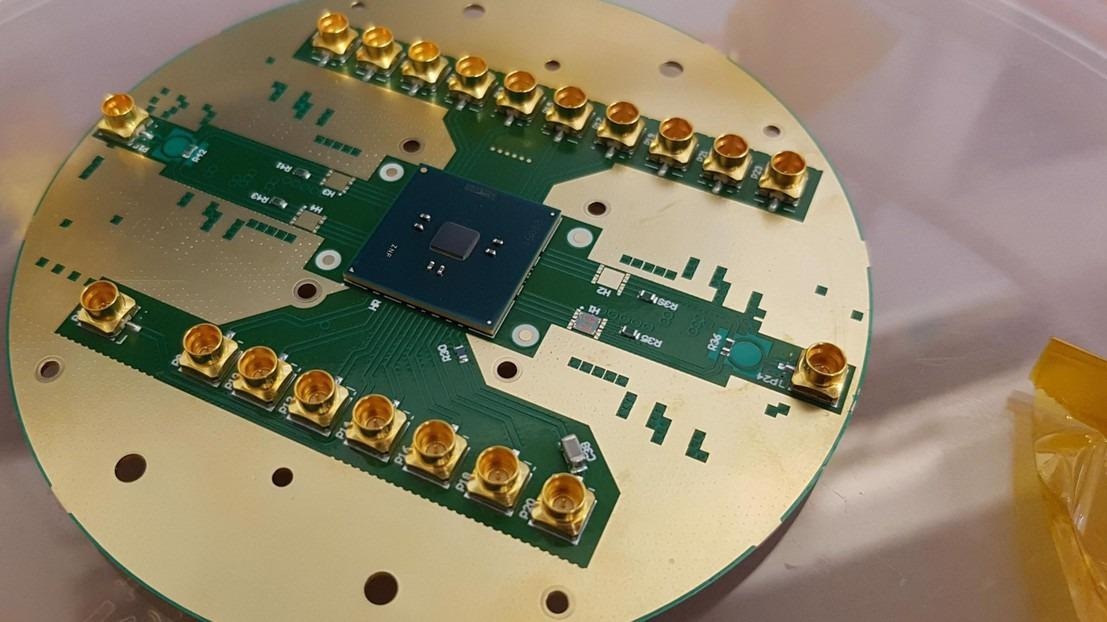May 18 2021
A new, uniquely developed chip to regulate qubits can work at very low temperatures and paves the way to solving the “wiring bottleneck.”

Image Credit: © 2021 EPFL.
Engineers and researchers from QuTech based in the Netherlands and from Intel Corp. have collaboratively developed and tested the new cryogenic chip, making a significant step toward a scalable and fully integrated quantum computer. The team’s results have been reported in the scientific journal Nature.
A qubit is a fundamental unit of a quantum computer and is generally addressed separately by a single wire.
This stands in the way of a scalable quantum computer, since millions of qubits would require millions of wires. This is called the ‘wiring bottleneck’. In traditional computers, a modern processor with billions of transistors has only a few thousand connections. The cryogenic temperatures at which qubits operate (20 millikelvin, or about −273 degrees Celsius) complicate the use of traditional solutions.
Lieven Vandersypen, Study Lead Investigator, QuTech
A chip like this would not be able to tolerate the high temperatures, and hence, a new cryogenic control chip was subsequently developed and tested.
Intel Horse Ridge
As such, engineers from Intel and QuTech—an association between the Delft University of Technology and TNO (the Netherlands Organization for applied scientific research)—developed a unique silicon-based integrated circuit that can tolerate cold conditions (3 °C above absolute zero) and also deal with qubits. The supposed “Horse Ridge” chip is dubbed after the coldest location in Oregon—the state where the Intel laboratory is located.
We exploited the same technology adopted for the conventional microprocessor, the CMOS technology. For Horse Ridge, we specifically used the Intel 22nm low-power FinFET technology.
Edoardo Charbon, Study Co-Lead Investigator and Head of Advanced Quantum Architecture Laboratory, EPFL
“As electronic devices operate very differently at cryogenic temperatures, we used special techniques in the chip design both to ensure the right operation and to drive qubits with high accuracy,” added Charbon.
In the end, qubits and the controller chip can be incorporated into the same package (since they are all designed in silicon) or die, thus further easing the wiring bottleneck.
High Fidelity and Good Programmability
To test the quality of the cryogenic Horse Ridge control chip, the researchers compared it with a traditional room-temperature controller and found that the gate fidelity of the system was extremely high (99.7%) and was restricted by the qubits themselves and not by the controller. That is excellent news with regards to the performance of the cryogenic control chip.
The programmability of the controller was subsequently demonstrated with the help of a two-qubit quantum algorithm. Being one of the simplest algorithms, the Deutsch–Jozsa algorithm is relatively more efficient on a quantum computer when compared to a conventional computer.
This shows the potential to program the new control chip with random sequences of operations and opens the door to on-chip implementation and a real, scalable quantum computer.
Journal Reference:
Xue, X., et al. (2021) CMOS-based cryogenic control of silicon quantum circuits. Nature. doi.org/10.1038/s41586-021-03469-4.